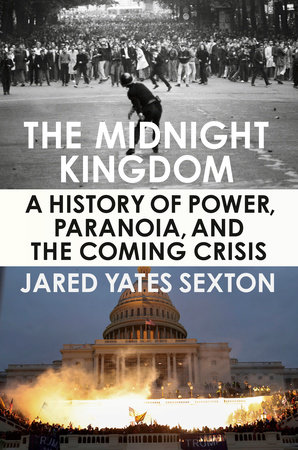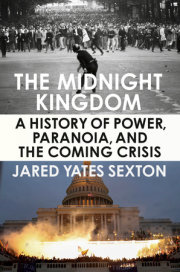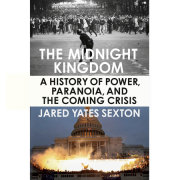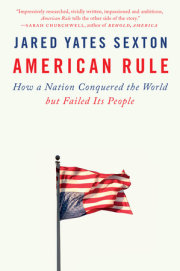- Chapter One -
By This, Conquer
The Great Fire of Rome erupted in July of 64 AD, and grew until it consumed everything in its path. Beginning in the merchant district around the Circus Maximus, for six days it raged, racing from one end of the city to another and back again, laying waste to homes, businesses, and temples before it was momentarily snuffed out. Then it reignited and terrorized the Romans for three more days.
People fled as best they could, many escaping the city to the countryside, carrying their belongings, dragging the injured to safety, while some, demoralized and hopeless from having watched their lives burst into flame, surrendered themselves to the fire. When the blaze relented, more than half of Rome was left in ruins. Dazed survivors wandered the streets, sifting through the ash and collecting the dead in the shadows of “charred vestiges of buildings.”
It must have felt like the end of the world for a people who believed themselves the pinnacle of human civilization. In becoming an empire, Rome had cultivated the belief that it was the chosen city of the gods, a superior people guided by providence and destined for glory, but even before the fire, that concept had begun to flicker, as for nearly a century Rome had been ruled by the Julio-Claudian dynasty, a series of rulers more and more inept and vicious with each passing generation.
Now, reigning over an empire of dust, there was the mad emperor Nero.
Born Lucius Domitius Ahenobarbus, Emperor Nero was only sixteen when he ascended to the throne in 54 AD. His wickedness was legendary. As emperor, he would reportedly escape his palace in “a capor a wig, and ramble about the streets in sport,” hunting commoners he could harass, trick, needlessly rob, or murder in cold blood. At public events he reveled in watching his subjects savage one another, instigating bloody and murderous battles by tossing the crowd scraps of food and tokens of wealth. Paranoid, Nero had his opponents, their children, and even his own wife and mother murdered.
This madness defined the late Julio-Claudian dynasty, the initial rulers of the Roman Empire, and set a disastrous tone. Unburdened by the fetters of representative government and held as living gods, the early emperors of Rome engaged in unrestrained brutality. Life in Rome was characterized by wild, extravagant, homicidal passion plays among the elite and an existence of “broken teeth” and repression for common people.
There is no doubt the culture and lineage that birthed Nero was corruptive. Emperor Caligula, Nero’s uncle, was consumed by “innate depravity” and infamous for his madness. A megalomaniac, he embraced his given role as a living deity at the top of the religious pantheon and declared war on the other gods. Described as “perverse” and a “lover of malice,” he terrorized Rome and its people. While he was “dining or carousing” he would have prisoners tortured and maimed nearby so he could revel in their suffering. In 41 AD, after a reign of terror, he was “hacked to pieces” by his own Praetorian Guard following a play with a mock crucifixion. He was so despised his body was “half burnt” and, in lieu of a proper burial, “had some dirt hastily thrown upon it.”
Nero carried on Caligula’s despotic legacy and was so distrusted that in the aftermath of the Great Fire rumors spread that he had started the fire himself and planned to destroy Rome so that he could claim “the glory of founding a new city, one that was to be named after him.” An apocryphal legend gained traction that as Rome burned, Nero, a self-styled actor and performer, donned a costume and “appeared on his private stage and sung about the destruction of Troy,” basking in the attention of a crowd and the warm glow of the nearby flames.
Before the embers had even cooled, Nero surveyed the ruins and planned the construction of his “Golden House,” a massive, decadent palace that would cover a large swath of Rome and stand in testament to his greatness. Suspicion grew that he had personally sacrificed the lives and livelihoods of the people in order to clear the way for his narcissistic project, stirring an environment of distrust and anger similar to the mood when his uncle Caligula had been assassinated and dismembered. To cover his tracks and quell the people, Nero would need to find a vulnerable population upon whom he could lay the blame for the colossal tragedy and mete out violent retribution.
“To dispel the gossip,” Nero turned to a small cult known as the Christians and “inflicted the most exotic punishments.” Under Nero’s command, members of the cult were “covered with hides of wild beasts” and “torn to pieces by dogs,” while others were crucified and “burned to provide lighting at night.”
Nero’s choice to persecute the Christians was predicated on their position in Roman society. Considered a fringe group obsessed with “perverse and unruly superstition,” the Christians of first-century Rome were outliers and regarded as fanatics and a destabilizing force in the tenuous community. With their religion outlawed, Christians worshipped in secret, prompting outrageous rumors of twisted rituals involving the sacrificing of babies and wild orgies. Romans imagined Christians in catacombs and shadowy spaces, drinking the blood of children “with thirsty lips” before reveling “in the shameless dark with unspeakable lust.”
Rumors aside, the Christians were seen as disruptive and “a class of persons quite unfit for the intercourse of social life.” As an empire, Rome had sustained societal peace via an intentional blending of cultures that valued pluralism and diversity within its borders. This mixing was best exemplified, and made possible by, the process of religious syncretism, or the merging of religions. As Rome grew in size and scope, uniting disparate peoples and cultures, their religious mythologies were wed as well, their gods and stories intertwining to form a new, cohesive mythology for all people to live within.
With each military victory, the Romans welcomed their new citizens into the empire and initiated their gods into the bustling pantheon of deities, where they cohabitated peacefully. To expedite cultural absorption, the Romans even constructed altars to “the unknown gods” to come as their territory expanded. When the Christian cult first made its way to Rome, its members were greeted with the news that their god and messiah were more than welcome and that one of the altars for an unknown deity was theirs to claim.
The system of syncretism and cultural pluralism was reliant on polytheism, or the worship of multiple gods. In Rome, there was scant competition between the many cults, and a citizen could be a member of an assortment of belief systems, picking and choosing their gods depending on the day, engaging in rituals and mysteries and a plethora of public festivals. The only requirement was that the Roman participate in the “state-sponsored emperor worship,” or the imperial cult, and use their sacrifices and prayers with their other gods to bolster Rome’s fortunes.
Christians had no problem lobbying their god for Rome. Like other Romans, they believed it was the empire “which keeps at bay the great violence which hangs over the universe and even the end of the world.” Much like the Greeks before them, Christians saw themselves as members of a greater civilization constantly troubled by the evil threat of so‑called barbarians—an “emotional, cruel, dangerous, polygamous, and incestuous” people, some of whom reportedly practiced “human sacrifice”— who lived just beyond the borders of the empire.
The term
barbarian itself was a creation meant to denote a person outside of “civilization,” or rather someone unprotected by the laws and privileges afforded a citizen. As defined by Professor Rick Altman, it was a means of “distinguishing inclusion from exclusion.” This separation determined everything from who deserved protection and resources to who could be killed without repercussions. In this way, the powerful could alter the perception of reality, including and excluding based on their needs, and either bringing peoples into the fold when terms and expectations were met or excluding them as punishment.
Christian prayers were laced with appeals to maintain the Roman order, but as a fervently monotheistic religion, Christianity made no room for the worship of the emperor as a living deity. This refusal by Christians to commit to emperor worship made them pariahs and easy targets for Nero’s retribution. Their perceived fanaticism raised suspicion that they might engage in terroristic behavior and set fire to the city in the name of their isolated god. But it is also likely that Christians were not alone in their martyrdom and suffering at the hands of the mad emperor. Some believe it is very possible another cult was punished for the Great Fire alongside the Christians: the cult of Isis.
A “goddess of immense magical power,” Isis arrived in Rome from Egypt, where she was held as one of the principal deities. The parallels between the cult of Isis and Christianity are extraordinary and speak to the evolution of religion from a mythology of how the natural world operated to promises of a supernatural world that overlaid our own. Through Isis and Christ, followers were “resurrected” and could achieve “salvation” through “baptism.” Like Christianity, the cult of Isis spread by evangelical missionary work orchestrated by a priest class actively seeking to convert believers. It is very likely that the cult of Isis was one of Christianity’s main rivals for religious influence in the ancient world.
Nero’s punishments— clothing the martyrs in hides and burning them alive—hints at the possibility the persecution was specifically a ridicule of Isis, as that faith featured adherents who idolized animals and included fire as an integral part of their rituals. It is near impossible to know for sure, however, because the historical record is incomplete and information about the cult of Isis and many other religions of ancient Rome was eradicated by Christians after they came to power centuries later. Over time, the cult of Isis was all but destroyed, the goddess Isis herself absorbed into the Christian mythology as an influence on the construction of the Virgin Mary, the mother of the Christian messiah, Jesus Christ.
The story of how Christianity overtook other faiths and evolved from a persecuted cult on the fringes of society into the official religion of Rome, and eventually the mythology through which the modern world was formed, is the story of how systems of domination are constructed, solidified, and weaponized.
It is the story of geneses and apocalypses.
Only four years after the fire, Nero’s reign collapsed into paranoia and bloodshed. Having wreaked havoc on Rome, the emperor realized even his staunchest allies had abandoned him. He believed that around every corner lurked assassins readying to dispatch him, as had been his uncle Caligula’s fate. Desperate, Nero fled Rome in disguise and escaped to a villa, where he dug his own grave and prepared to meet his fate. In June of 68 AD, Nero believed he heard the “swift-heel’d steeds”of his would‑be assassins and either committed suicide by plunging a dagger into his throat or ordered one of his last remaining companions to do it for him. The mad emperor died as his blood soaked the dirt.
But Nero was so despised and infamous that his demise was only the beginning of his story. After his escape and death, rumors spread that he had faked his death and was amassing troops for an all-out assaulton Rome. There were tales of court “astrologers” who had warned the emperor he would be “deserted by all the world” but would find power in “the East” and “the kingdom of Jerusalem.” Still others believed Nero’s malevolence was stronger than mortality and that evil itself would resurrect him from the grave.
Called the Nero Redivivus legend, this story was so powerful that several “counterfeit Neros” appeared with claims to his legacy. These imposters emerged from the far borders of the empire and hypnotized populations with stories of resurrection. They looked like Nero, performed like Nero, and in one case a false Nero roused enough of a following that it nearly escalated to the point of war. But the Nero Redivivus legend wasn’t purely a Roman or civic legend. Among persecuted Christians, there were prophecies he would return as well, “making himself equal to God” before a final battle where the Christian god would “prove him naught.” One such telling of this story has been immortalized in the Book of Revelation in the Christian Bible and has had unbelievable repercussions on human civilization for millennia.
Prepared by an unknown author who has come to be called “John of Patmos,” the Book of Revelation was composed as a letter to the Christian churches of Asia Minor near the turn of the second century. The letter seems to be an address on Christian persecution under the rule of Emperor Domitian, who demanded his subjects refer to him as “master” and “god,” and served as a warning against Christians succumbing to the imperial cult. It swims with lush and apocalyptic imagery, painting a portrait of a final battle between good and evil. That climax is teeming with memorable characters and moments, including the Four Horsemen of the Apocalypse, the Whore of Babylon, horrid beasts and monsters, plagues and celestial judgments, and the final victory of God over his eternal antagonist Satan, resulting in the Devil being hurled into a “bottomless pit” for a thousand years before rising again and being “cast into a lake of fire burning with brimstone” for the rest of time. In the aftermath, John of Patmos promised, devout and loyal Christians would be rewarded with “a new heaven and a new earth.”
Due to the persecution of Christianity and the dangers of openly criticizing Rome, Revelation is coded, and its intentions are unclear as to whether it is a prophecy for a future event or a metaphor-laden account of contemporary occurrences. What seems clear is that Nero plays an integral role as a blasphemous “beast” who rises from the sea, wounded “by a sword” and yet resurrected, with an identifying numberof “six hundred threescore and six,” the number “666,” which, in Hebraic gematria, was understood to represent the deposed emperor.
Three centuries after Nero’s death, early Christian scholars like Augustine of Hippo believed that Nero possibly represented the legendary “Antichrist,” or Satan’s profane answer to the messiah Jesus, saying many Christians believed he would rise from the dead and be “restored to his Kingdom.” Similar legends held that “Beliar, a great angel,” would “descend . . . in the form of a man, a lawless king, the slayer of his mother.” St. Victorinus wrote that Nero was the Antichrist and that God would send him as a punishment “worthy” of the worst unbelievers, “namely the Jews and those who persecute Christ.”
Apocalypticism was a carryover from the Jewish tradition that came to define the Christian faith and perpetuated its consolidation of power. As had been the case with the writings of the Old Testament, Christian apocalyptic narratives arose from “a situation of crisis” and served as a means to spur action and propagate faith. Primarily a “minority phenomenon,” these apocalypse narratives highlight the actions of the majority and warn that the current “course leads to perdition.” The stories are predictably similar and feature a “present age” under the control of Satan and ripe for the rise of an Antichrist while a renewal of faith promises a “glorified” future.
The Christian and Jewish faiths differed on the question of the presence and influence of embodied evil in the scope and trajectory ofthe world. While Jewish thought tended to view Satan as “a symbol ofthe tendency to evil within humanity,” the Christians believed they were engaged in an active and dire war against the literal personification of evil. This battle defined Christian mythology and was a worldview based on “transcendent reality” divorced from empirical evidence and based on “visions” and faith.
This mindset drew a violent line between Christianity and its “pagan” contemporaries. Polytheistic religions were defined, as noted by Walter Burkert, by their “absence of religious demarcation and conscious group identity,” while the burgeoning monotheistic mythology depended upon them. Pagan gods in a syncretic system helped in the formulation of an open, pluralist society. Monotheistic Christianity, with its apocalyptic mission, considered anything besides a homogenous society ordered by its own tenets and beliefs as evil and a direct path to Satan conquering the world.
It would have been one thing had the monotheism of Christianity simply precluded believers from worshipping other deities, but the god of the Jewish and Christian faiths was a “jealous god” who demanded followers “not bow down” to other gods and ordered them to “overthrow them, and quite break down their images.” The Bible is filled with such commandments, orders to “destroy their altars, break their images, and cut down their groves: For thou shalt worship no other god; for the Lord . . . is a jealous God.”
Monotheistic Christianity thrived on the act of demonization, which not only set its own faith apart and above its competitors but painted them as engaged in an evil scheme on behalf of Satan and hastening the end of the world. If pagans and polytheists were allowed to carry on unabated, it would mean certain disaster and the triumph of supernatural evil. In this way, Christians cast themselves as the ultimate arbiters of right and wrong, a responsibility that found them “beset by perceived enemies both outside and within.”
Using invented concepts like supernatural forces and the looming consequence of an eternity spent in punishment in hell, Christians manufactured a mythology entitling them to dominion over society, while anyone who refused to join them would necessarily be dispatched for the good of the world. To this end, the Bible promised a cosmic reckoning at the end of time wherein God, as judge, would “separate” the faithful from the wicked, reward the good with an immortal kingdom, and order the disbelievers “into everlasting fire.”
Over the centuries, as Rome suffered one setback after another and the imperial cult lost its grip over the realities of its people, the Christian doctrine and system of hierarchies gradually replaced the decaying order and draped its worldview over the flagging Roman myth. That Christianity won out over rivals like the cult of Isis can be explained by how its worldview aligned more with Roman values and how it girded traditional hierarchies.
Roman society was extremely stratified, relying on a strict divide between
humiliores, the common people, and
honestiores, the privileged who enjoyed wealth and status. These existences were similarly composed of in‑groups and out-groups and constituted wholly separate spheres. Common people were mostly frozen in their station and subject to cruelties and humiliations, while the elite were respected and protected from punishments unbecoming their status. It was necessary, in order to protect this hierarchy and social order, to shift from a mythology where the most powerful were deemed superior by the gods toone where those holding “divine truth” and the favor of a monotheistic god enjoyed a “natural” advantage.
In another instance of Christian principles supporting deeply ingrained Roman values, the Christian faith was stringently patriarchal. In the creation myth of the Garden of Eden, after the first woman, Eve, ruins paradise and damns humanity to an existence of pain and suffering, the mother of the human race is told that her husband, Adam, and all subsequent men “shall rule over thee,” setting a tone for patriarchal domination based in theological law. While the cult of Isis held that women were equal to men, Rome had been founded on the principle that women were “expected to conform themselves entirely to the temper of their husbands” and to exist as “necessary and inseparable possessions.”
The cult of Isis and Christianity were similar, but their distinctions determined much of the fate of history as Christianity’s tenets converged with Rome’s economic and political interests. While the cult of Isis stressed a symbiotic relationship between humanity, animals, and the environment, Christians believed they had been given unquestionable authority over nature, having been told by their god they had “dominion over the fish of the sea, and over the fowl of the air, and over the cattle, and over all the earth,” which allowed humanity to plunder resources and bend nature to its will. And while the cult of Isis “did not allow room for any quarrel between science and religion, any prudery about sex,” or “discrimination and segregation,” Christianity relentlessly warred against knowledge as an assault on God, shamed individual expression, and provided the theological framework for the intentional oppression of vulnerable peoples.
Several features of Christian monotheism made it especially potent as a replacement mythology for the imperial cult of Rome as the mythology lost its luster and appeal. The creation of in‑groups and out-groups inspired by divine intention, with a system of supernatural rewards and punishments to entice fealty and stave off disruptions, meant that Rome’s fragile order could be revitalized. The existence of divine truth that lay beyond the realm of the senses meant objective reality could be discarded by possessors of heavenly revelation. This “revealed truth,” wielded by supposed prophets of the Christian god, was more authoritative than “deceitful evidence,” which was treated as “seduction” on behalf of “false gods” like Satan and his demonic horde.
This invention created a manipulatable weapon in the form of revelation. Individuals claiming godly inspiration or a direct channel to the creator of the universe could wield unquestionable power in the name of a holy mission, legitimizing great acts of persecution, all of it in the higher service of defeating evil before it destroyed human civilization.
Copyright © 2023 by Jared Yates Sexton. All rights reserved. No part of this excerpt may be reproduced or reprinted without permission in writing from the publisher.







